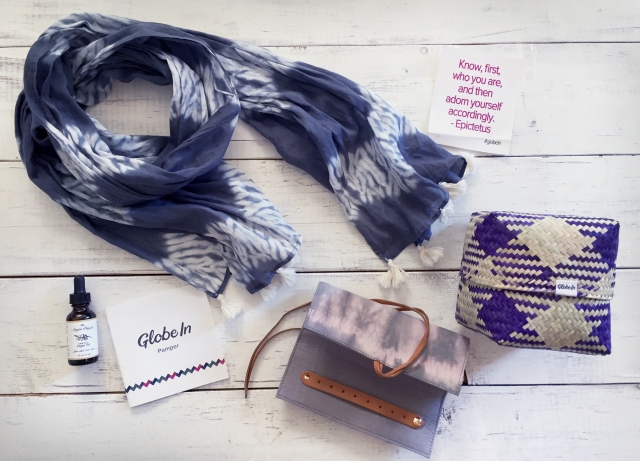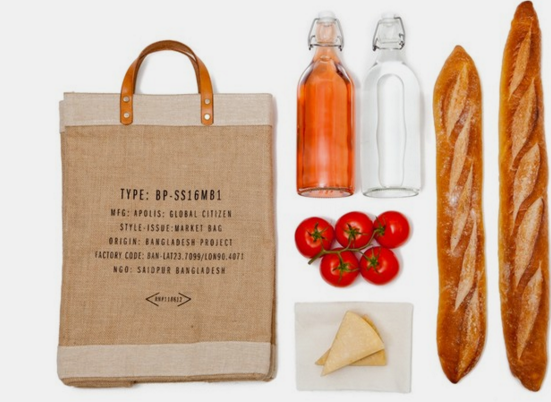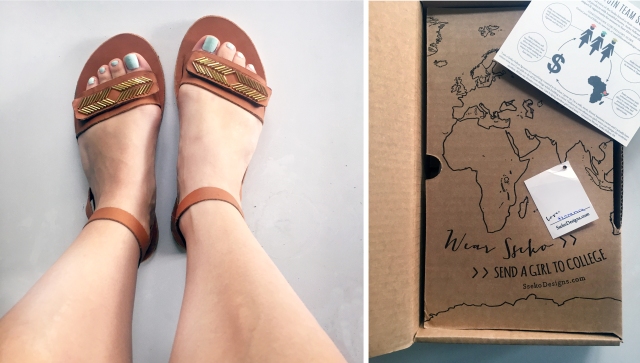As the Obama Administration started the long thaw of Cuban-US relations, just as the FAA was clearing US-based commercial flights to the island nation, and before we even cleared a major hurdle of Dhanya’s adoption, we were like, “let’s go to Cuba.”
Spirit Airlines started booking flights earlier that fall (2016), and we booked our flight from ATL, stopping in FLL, and onto Cuba in September. (We had to go through the travel agency Spirit specified to obtain a proper visa.) Fidel died November 25, the first US commercial flight landed in Havana 3 days later, and 3 weeks later Zack and I were there too. What a crazy time. Getting “CUBA DOCS OK” stamps on our boarding passes was cool, but getting a Cuban stamp in my US passport was just surreal.
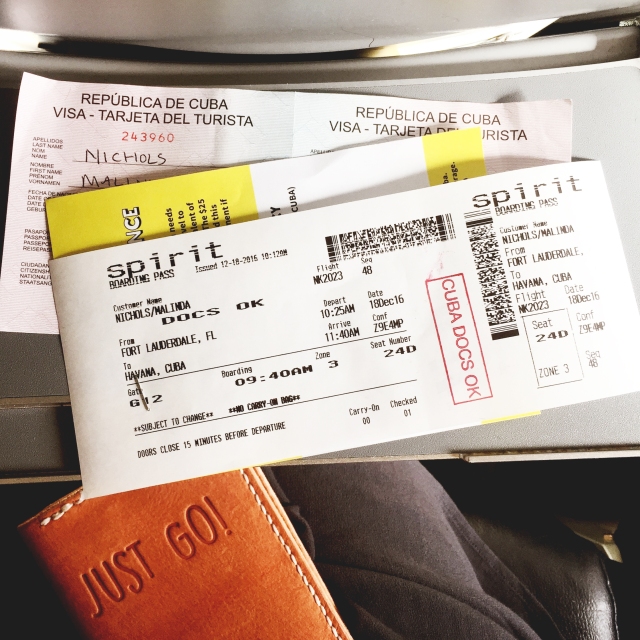
We booked an awesome AirBnB, a block behind Parque Centrale. It was about $60/night, we had a whole apartment to ourselves, the owners provided transportation to and from the airport, and it had a great balcony to observe the day-to-day of Havana. There was a state-run bric-a-brac shop on the ground level, and a poster of Fidel greeted us as we walked up.


Staying at an AirBnB helps the locals way more than the state-run Communist government, and this is just one of many of ways you can dodge state-run establishments.
After we exchanged our money (bring lots of cash–American cards don’t work here!) from a local guy (NOT an official state-run money change bureau), we set out to explore Havana on foot. We didn’t have any set agenda, we just enjoyed feeling like we stepped back into the mid-century.
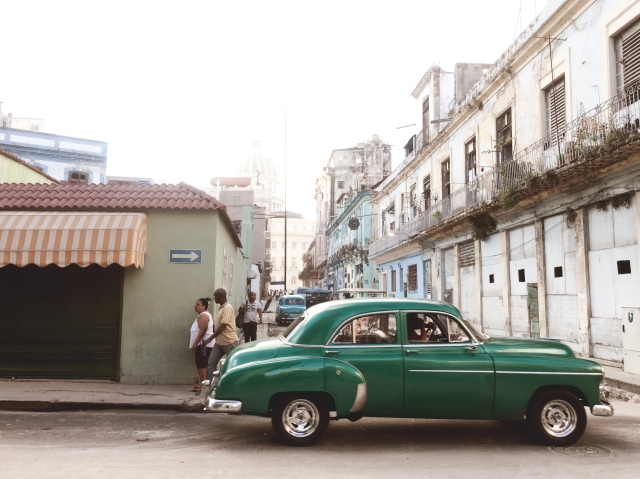

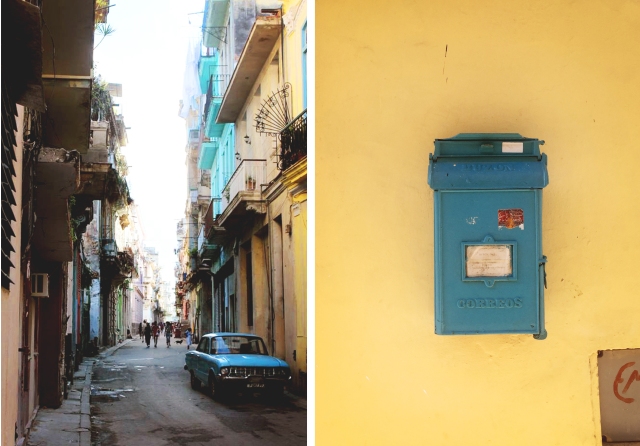


Men playing chess in public. There is almost no internet in Cuba, so entertainment probably hasn’t changed as much in Cuba as it has in the rest of the world! 
The old cars are perpetually out on display, and are not only a means of transportation, but also a way of generating income for the owners. 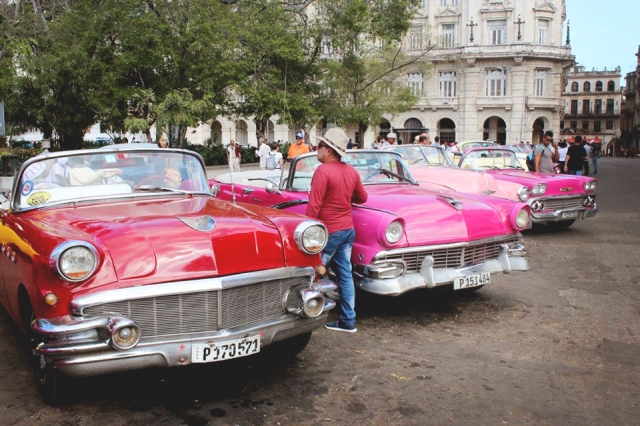
I bought small painting from this artist, who sells her pieces in an open-air market in the Central part of the city. 

We also enjoyed getting from one side of Havana to the other in one of the “coco taxis”! 
 Dancing and live music are everywhere, and it’s so hard to not get up and rhumba right along with them!
Dancing and live music are everywhere, and it’s so hard to not get up and rhumba right along with them! 
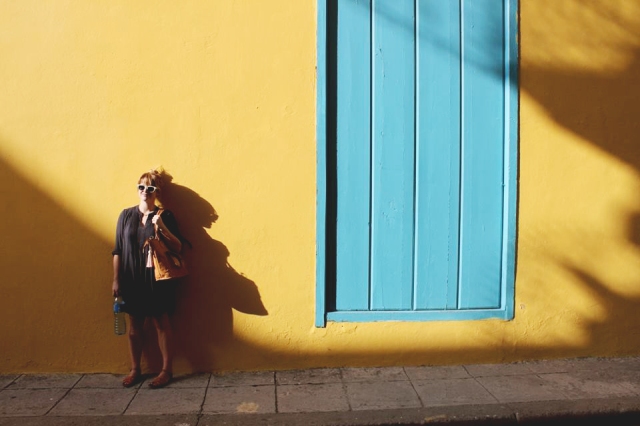
Sea-washed building facades begged for their photos to be taken. 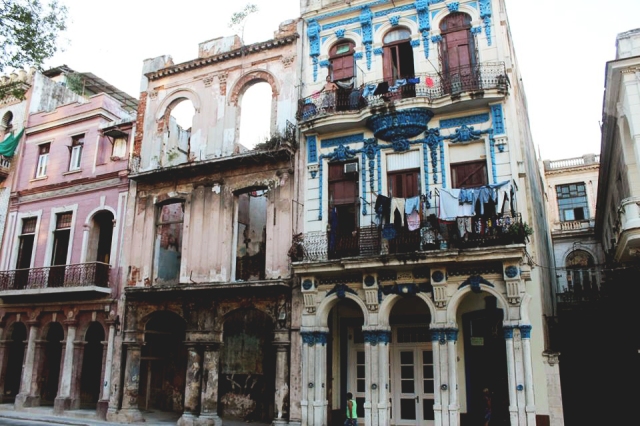
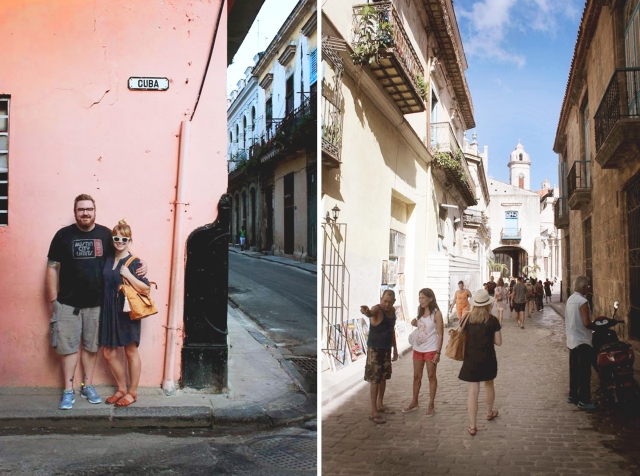



 Located within the Vieja (the Old City), we found ourselves at the Museum of Chocolate! Cacao is a major export of Cuba, and while I wouldn’t say this is really a museum, save for some display cases of vintage molds, it is a charming little place filled with colonial charm and delicious treats. We fell in love with their cold chocolate drink, somewhere between a class of chocolate milk and a chocolate milkshake, and for just 1 CUC, we downed several glasses during our time in Havana!
Located within the Vieja (the Old City), we found ourselves at the Museum of Chocolate! Cacao is a major export of Cuba, and while I wouldn’t say this is really a museum, save for some display cases of vintage molds, it is a charming little place filled with colonial charm and delicious treats. We fell in love with their cold chocolate drink, somewhere between a class of chocolate milk and a chocolate milkshake, and for just 1 CUC, we downed several glasses during our time in Havana!

And thanks to years of Spanish colonization, the tradition of dipping warm churros in your hot drinking chocolate is still alive and well. The churro cart isn’t directly affiliated with the Museo, but they set up shop just outside of it.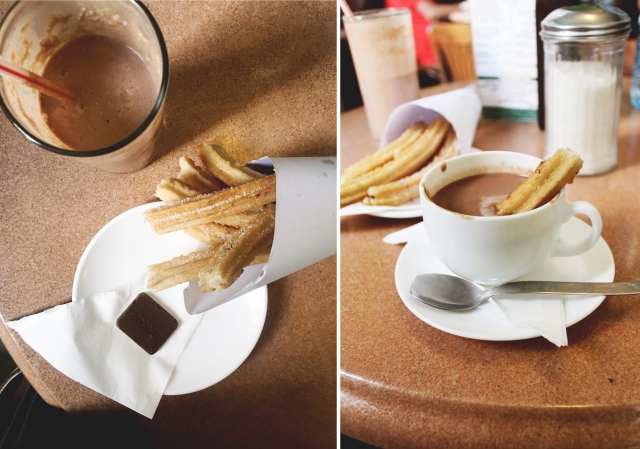

We also enjoyed some deep-fried sugared tortillas from a street vendor, served in a cone made of “vintage” printer paper. Check out those perforated sides–I haven’t seen paper like this since the 90s! 
Another way to support the Cuban locals rather than the State is to eat meals at paladars. These are restaurants that are essentially set up inside of people’s home. The Cuban government owns the actual real estate, but in recent years, the citizens have been given the ability to use their homes at more or less their own discretion. Good Cuban cooks + “free” real estate = paladars!
Perhaps the best meal our whole stay in Cuba was at Cafe Laurent, which is considered to be one of the finest paladars in the city. We walked through a small, unassuming shady walkway, up 4 winding flights of stairs (or a tiny elevator filled with cool ephemera), and into the bright white spacious dining room that opened to up a huge balcony and panorama of the city. The food, cocktails, and coffee were great…and a million times better than the state-run places that look pretty and have nice presentations, but are very, very mediocre food.


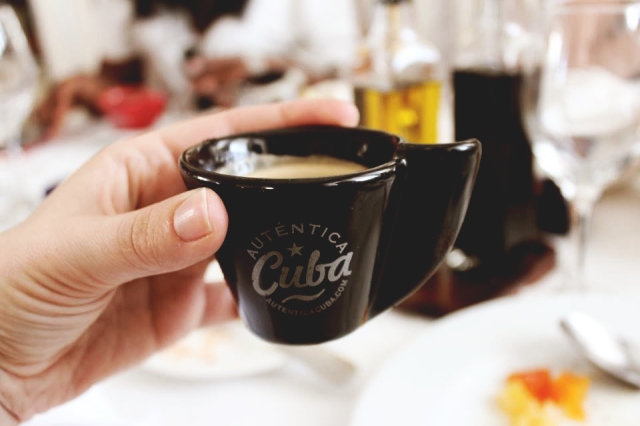
And in the land of the mojito and the most amazing rum, we definitely enjoyed a cocktail or two. Culture, and all.


I really only had set our for one souvenir to bring back with me (other than a couple bottles of Havana Club rum, since it’s not available in the States!), and that is a bottle of my own custom-blended perfume.
Habana 1791 is located in an old mansion in the Vieja, and inside you’ll find large glass decanters filled with scents that have been extracted from botanicals on the island. Imagine if you could bottle up Cuba’s best scents…jasmine, tobacco, rose, citrus, lavender…even chocolate!

After lots of sniffing and very careful consideration, I ended up with my own small glass bottle of chocolate and other warm scents. It’s honestly my favorite souvenir I have ever picked up on a trip! The mixed it, corked it, sealed it in wax, and wrapped in up in lots of layers of plastic for the trip home. When I wear it, it takes me back to exactly this warm, sunny day and this gorgeous island! 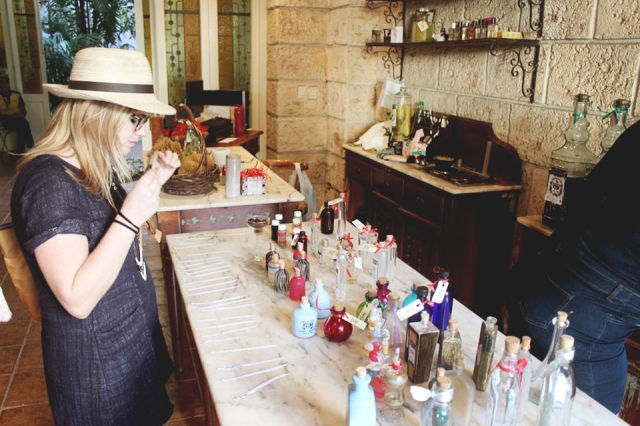



Since our trip there two years ago, so much has changed with the diplomatic standings between America and Cuba. You can still take your choice of US-based commercial airlines to the island, but the State Department has issued warnings to visitors due to strange attacks on the Embassy workers. I pray that this changes, because this place is an absolute gem. There are no McDonalds or Starbucks dotting the rows of sea salt-washed buildings, there are no Americans opting for an easy all-inclusive stay at Sandals, and it feels like you’re getting a trip to Spain at a fraction of the cost! The people are wonderful, the culture is rich, and the rum is refreshing.


The Nichols will definitely find our way back! 
My Top 10 Tips for Visiting Cuban and Exploring Havana
It’s been a long time coming from USA passport holders, but late last year we were all finally able to hop on a commercial flight in the States and fly to our Caribbean neighbors just 90 miles south. Cuba. Elusive Cuba!
In January of 2015, OFAC (Office of Foreign Asset Control) under the Department of Treasury, made it easier for US citizens to actually travel to Cuba, but it was still a problem to get a direct flight. It wasn’t until 2016 that the FAA approved commercial flights originating in stateside; after the routes were given the green light, Southwest, JetBlue, Spirit, American, and more starting shuttling eager passengers to the island nation.
I booked our flights with Spirit Airlines in September, but the first Cuban-bound flight didn’t leave Ft. Lauderdale for Havana until December 1, 2016. We headed down just 18 days after the route opened, and after a 14 hour flight in coach to the Middle East in 2015, the 45 minute flight to another country was almost a joke. We started our descent within minutes of hitting cruising altitude.
So, that’s a good place to start: cutting through the red tape to physically get down there.
- Flights and Documentation
As a US Citizen or passport holder, you don’t have to apply for an OFAC license anymore, but you will want to pre-purchase a visa from the Cuban government. The easiest way to do this is after you book your flight, call the travel broker your airline works with. You’ll fill out a simple form and they will send you an invoice. Once it’s paid, they’ll mail you your entry visa. With Spirit Airlines’ broker we paid $85 each, but some fellow US tourists we talked to paid as low as $50 (they traveled JetBlue from JFK). You CAN buy your visa at the airport before you board your flight to Cuba, but it will cost you $100 a pop and some extra time.
We flew from Atlanta and when we arrived at Ft. Lauderdale, we ran to our gate with barely any time to spare (Spirit Airlines! Imagine that!) and were then re-routed to their customer service counter the next terminal over to finish up the travel documents necessary for entry. We showed our visas that we had already filled out, and then had to sign another form that stated which of the 12 reasons we were traveling to Cuba. Since I’m a teacher and truly was going for educational reasons (I teach the Spanish-America War, the Cuban Missile Crisis, and Bay of Pigs to my 6th graders), I checked “educational travel” and so did my husband. Most check “people to people”, but whatever you choose shouldn’t be an issue. We were never asked about it again.
We boarded and less than an hour after takeoff, we were in Havana!
2. Arrival and Transport into City
This gets a little sketchy, because some US citizens on our flight had been given an arrival form, but we hadn’t! We went through passport control and got our passports stamped (which is SO COOL! A US passport with a Cuban stamp! Who would have thought we’d live to see the day?!), and when we went through the next checkpoint, we reached for a white form to fill out, but the guy said “US citizen? No, no! Welcome!!!”. We thanked him and went to grab our checked bag. There was yet another form that people were handing to a Cuban airport official as we walked into the arrivals hall, but yet again, whatever lack of documentation we had didn’t seem to apply to us. ¡Hola Cuba!
The arrivals hall is a bit bananas, but if you arrive with a plan, you’ll be in good shape. We stayed at a casa particular we booked through AirBnb, so we had sorted out airport pick-up with the casa owner. But even if you don’t do that, a cab into the city center will run you about 25 CUCs. The roads are well-marked so even if you’re staying outside of the Centro or the Vieja, chances are good your cab driver will know where to go. It wouldn’t hurt to mark your destination on a map (Google maps or an old-fashioned one!) just in case.
There is a major currency change bureau just outside the arrivals hall, and if you’re taking a cab, you’ll have to brave the long line so you can pay your driver. Our driver drove us to our AirBnB, then walked us across the street to a guy who exchanged money (more on that below) and let us pay him after we did so, which let us avoid the line.
3. Currency, Exchanging Money, and Tipping
Cuba’s currency is closed, which means it can’t be exchanged outside of the country. You can’t get pesos before you go, and you can’t exchange your dollars back once you leave!
Cuba also has two currencies: the Cuban Peso (also called “money nationale” and abbreviated to CUP)*, and the Cuban Convertible Peso (also called “convertibles” and abbreviated to “CUC”; often pronounced like “cooc”). I thought I’d maybe use the CUP for small things like coffee, but our driver said that as tourists, it’s pointless to even try to find them. So CUCs it was.
The CUC is the “tourist” currency—remember, you’re in a communist country! One CUC is equal to twenty five CUPs. A Cuban can get a lot for just a couple of CUCs, so it’s important to tip in CUC. One CUC tipped after a small meal stretches really far for the locals, and since it’s a tip, it keeps money in their pockets. Why do we pay 1 CUC for a cup of coffee while Cubans pay 1 CUP, making their cup 25x less than ours? Because we are subsidizing what the Cubans pay. Again, remember, C-O-M-M-U-N-I-S-M. Fascinating, right?
The arrivals hall is the obvious place to exchange, but you’ll miss a couple hours out of your first day in Cuba if you hang out there in the line. Our driver took us to a friend who owns a business and he gave us the same exchange rate as the “official” places, but minus the line, and he keeps the commission. I’m totally ok with that.
BUT the easiest thing I can tell you is to go to one of the major hotels surrounding Parque Centrale in Centro and exchange there. We exchanged at Hotel Ingleterra a couple times; note that they don’t exchange bills smaller than $20 (which I’m assuming is standard).
The exchange rate is technically 1 CUC to 1 USD. But given the icy history between the countries, we all have to pay a 10% penalty to exchange our American dollars, in addition to the 3% commission fee. So that $1 is actually on worth .87 CUCs. UGH. I know. If you’re really pinching pennies while there, then look into exchanging you USDs for British pounds, Euros, or Australian dollars; it might be worth it depending on the current rates when you travel, but Cuba is overall so cheap that I don’t think it’s worth the extra hassle.
And as a reminder, American credit and debit cards don’t work in Cuba! Plus, they are a cash economy, so waiving your plastic around wouldn’t do you much good anyway.
4. Lodging: Hotels vs. Casa Particulars
All hotels in Cuba are state run. Every one of them. And considering that a stay in one of the nice Parque Centrale hotels run $200 and up per night, and you can’t book them online before you leave (you’d have to go through a Canadian agency), ugh, why bother?
Overwhelmingly, the way to go is a Casa Particular. A few years ago, Raul Castro allowed homeowners the right to rent out their homes or rooms within them to tourists. Don’t be weirded out by this if you are a high-maintenance traveler or are still finding your traveling feet. (This would have unnerved me at one point!) This is so the norm that it is the recommendation of every Cuban travel expert out there. Plus, it supports the local economy of the people.
Even though Americans still can’t book hotels online through our typical avenues like booking.com, Travelocity, etc., AirBnB on the other hand has a business model that already works hand-in-hand with the Casa Particular industry. Booking a Cuban apartment is no different that booking one in Paris, Rome, or anywhere else. We used this one, and I highly recommend it! Barbara’s sister and brother-in-law, Ubaldo, provided our airport transfers for 30 CUCs each way, helped us exchange our money, and were a really gracious and lovely example of Cuban hospitality. Ubaldo even hugged us at the airport when he drove us back at the end of our trip. People. I love people.
5. Wifi
Wifi has only been in Cuba for about 5 years or so, which makes it both rare and still a novel idea. Wifi is only available in a small handful of locations, like the Parque Centrale hotels and a random street corner in the Vieja. You know how in Europe or America you can go to any given café and connect to the public wifi? That luxury does not exist in Cuba!
Of course the internet is state run, and like anything that the government controls, it’s far more cumbersome than it should be. Let me walk you through it step by step:
First, find yourself an Etecsa card. We bought one at a small hole-in-the-wall shop between Hotel Ingleterra and Hotel Telegrafo. You know you’re in the right place when you feel just about positive you’re being ripped off. One hour cost 5 CUCs. The other place we got one, and a much better deal, was the business center on the second floor of the Iberostar Plaza Hotel. It was 10 CUCs for 5 hours.
Make sure that it hasn’t been ripped or tampered with before you purchase it.
Break the seal to find the access code and passcode.
Go to a wifi hotspot (we usually parked in the comfy couches inside of Hotel Ingleterra) and once you turn your Wifi on, it will prompt you to put in the codes. You’re on! But remember that everyone else in that hotel lobby, equally anxious to ‘gram out their mojitos to friends back home, is eating up the bandwidth, so expect it to be slow.
6. Safety
This is last practical part of this post before we get into the fun stuff, and I’ll be quick.
Cuba is not scary. It’s not dirty. It’s not shady. I never felt in danger or like I was going to be the victim of a scam. Our first night we walked back to Centro from the Vieja on Calle Obrapia, a dark road that we didn’t yet realize was just two blocks over from Calle O’Reilly, the livelier main artery connecting the two areas, and never once did we feel like we were going to get jumped!
I didn’t feel like I needed to make sure our camera was stowed away or my purse had to be zipped no matter what (though I usually did). This is how I feel in any given European city, but not in Havana. Now that’s not to say that we were being idiotic or naïve with our belongings, but you get the idea.
Basically, you’ll be fine as long as you’re not a dumb American. (And as long as you don’t look like one either. That’s another blog post for another day.)
7. FOOD. (And drinks.)
Travel perk numero uno is of course what good stuff you can cram into your face and not feel bad about “because you’re on vacation”. Follow this main rule, and you’ll be in good shape:
Independently owned restaurants = fantastic. State-owned restaurants = nasty crap.
Independently owned restaurants, called paladars are strikingly better in every way. A state run place might look nice, but the quality of the meat is not as good. We ate at a couple of state-run places before we really knew any better/too tired to look for a paladar, and we were shocked at how tough the meat was.
Paladars opened a few years ago under the same pretense as casa particulars: the people own them, so they can do whatever they want to with him. On the outside, the buildings must remain the same. But the inside can be retro-fitted to accommodate a legitimate restaurant. They are hard to spot because they don’t usually call themselves “paladars” in the name, but a good guide book or a chat with a local will help point you in the right direction.
There are of course exceptions to the paladar-only rule. The Museo del Chocolat, as I mentioned above, is in the Vieja at the corner of Mercaderes and Amargura.
The pink pastry shop, Pastelaria Francesa, between Hotel Ingleterra and Hotel Telegrafo, is also super cheap and not a terrible place at all to grab a sandwich or quick European-style breakfast. They have good espresso drinks to offset the terrible service (#communism). Hotel Ingleterra offers a decent enough American-style buffet for 10 CUCs a person if you’ve really got a hankering for something like that, but I’m not convinced it’s the best option. We ate there our first morning because we were tired and cranky and it was just more convenient than anything else.
I admit that our stay was too brief to sufficiently explore this aspect of travel, but if you’ll be intentional about seeking out paladars instead of sitting down at the first convenient place you see, you’ll be in good shape.
Let’s talk cocktails.
Even the most temperent would be remiss to not enjoy some Cuban rum. The Havana Club brand is really good, and mixed into any variety of tropical cocktails is refreshing in the Caribbean heat.
Obviously you’ve got to find yourself the famous mojito: muddled mint, a spoonful of white sugar, ice, soda, and Cuban rum. Next you’ll need a daiquiri just to say you did. Cuban daiquiri ≠ NOLA daiquiri, btw. I had a great and Pepto Bismal-pink pina colada at the Hotel Nacional de Cuba. My beer-drinking husband drank several of the beers, but the most ubiquitous local brew is a pale Mexican-style pale lager that tastes like a watered down Corona called Cristal. Not fantastic, but maybe it’s your thing. He liked the Bucanero too, which is a little darker. For my money, just stay with the mojitos, my friends!
8. Exploring Havana
The Lonely Planet Cuba guidebook is a great resource to get your bearings in Havana. It breaks Havana down by district and there is a pull-out map in addition to smaller maps throughout the Havana chapter. I marked all of the places that were of interest to us and then was able to piece together a plan for exploring on the first day. The streets are very well marked, and we had no trouble figuring out where we were going.
Transportation: We stayed in Centro, right behind the major hotels, so the Vieja was just a 6 block walk or so, and we always walked there. One night we did take a Coco Taxi, mostly just to say we did. Always negotiate a fair beforehand, and make sure that you either settle a flat price OR your driver agrees to set the meter. It shouldn’t cost more than 3 or 4 CUCs for a zip from Centro to the Vieja, and arguably that might even be too much! Remember that you, the tourist, are subsidizing what costs the Cubans the equivalent of less than a dollar.
Walking Tours: Since I was teaching school up until the day before departed, I didn’t have as much time to research as much as I typically do before heading on a trip, so I booked a full day walking tour of Havana with the Havana Tour Company. I could pay for it online with a credit card and then we covered it with credit card points, so even though it didn’t cost us anything out of pocket, I still think it was worth the $200 price tag. Here’s why:
- Our tour guide. Daniel. He was awesome. He spoke great English, had a wonderful sense of humor, and was like a walking Cuban history encyclopedia. He told us from the first moments of the tour that we could ask him anything, even things that we’d think would be awkward to ask a Cuban. (Remember, we were there less than 3 weeks after Fidel died. And yes, we could ask him anything about it.) At lunch, we sat down and compared how Americans are taught the Bay of Pigs invasion and the Cuban Missile Crisis versus how the Cubans are taught it.
2. We’re still in the early days of commercial American-Cuban travel since Kennedy was in office. Understand the gravity of this. Learn about the complex history of American-Cuban relations. Teddy Roosevelt stepped down from his high rank in the US government to get together with his college buddies and form a volunteer cavalry that helped liberate the Cubans from General Wyler and the oppressive and abusive Spanish rule. Cuba and America were just fine with each other. During Prohibition, Cuba was the playground of the rich and notorious. A few decades later, Fidel upheaved their government and—surprise—communism was dawning in Cuba. Your tour guide will walk you through this frigid history as he walks you through humid Havana. Our countries are fascinatingly linked to one another, and you should understand why.
And for the love, avoid ANYTHING that claims Hemingway ate/drank/slept/wrote/looked at/though about/walked by there. Why? No local actually frequents them, and the prices are outrageous. La Boguita** was his mojito of choice and the Floradita* was his daiquiri of choice. The prices and lines are outrageous. If you pay more than 4 CUCs for a cocktail, you’re being ripped off.
9. Get outside the city
It’s really easy to find and books tours that will take you outside of the city, or you can even take an in-country flight to another part of the island. Research this and do this. Just like there is so much more to France that Paris, there is so much more to Cuba than Havana. We spent a day exploring the tobacco plantations and gorgeous landscapes of Vinales, and I absolutely recommend it!
10. Souvenirs
Just like Casa Particulars and Paladars, some Cubans are opting to turn their homes into souvenir shops. As you walk through the Vieja and see straw hats or little figurines made out of clay pouring out of tiny doorway, then know you are supporting both the Cuban artisan who crafted it, and the Cuban who converted their living room into a shop. It’s easy to spot locally crafted items over imported goods, and remember that only the government is allowed to import anything from abroad.
So there you have it, my Havana Top 10. Comment below if you have any questions or if I need to update my info due to something changing!


 …and there she was.
…and there she was.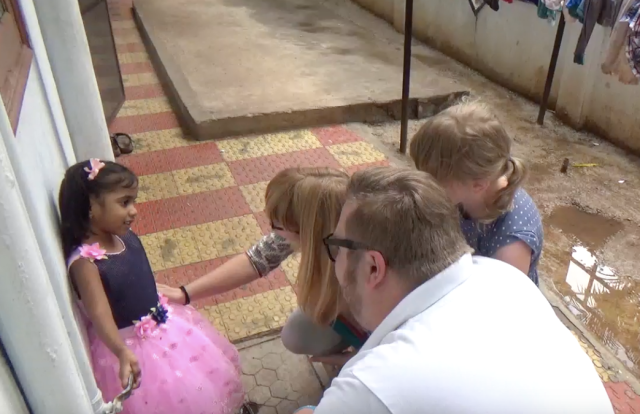





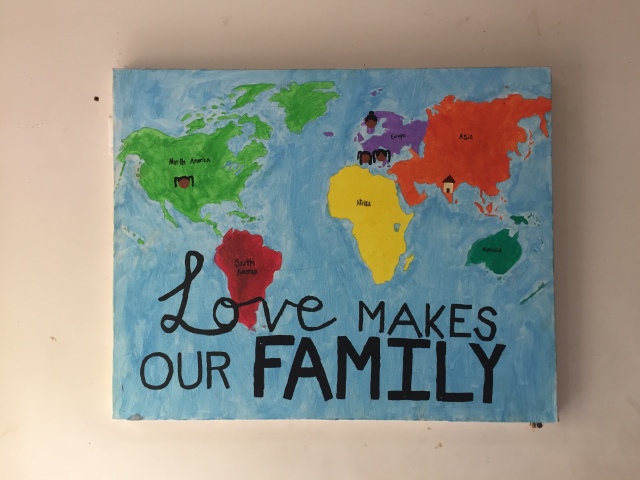
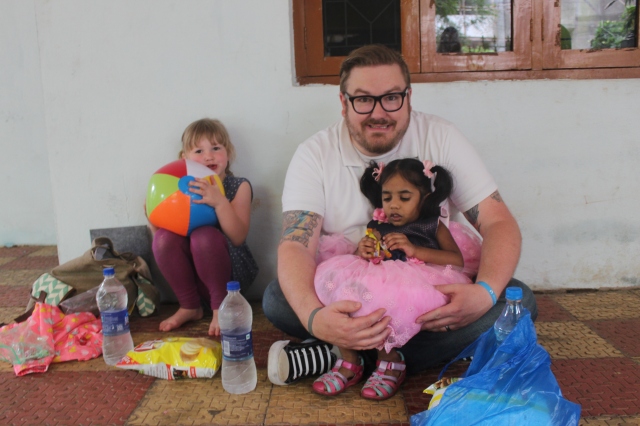
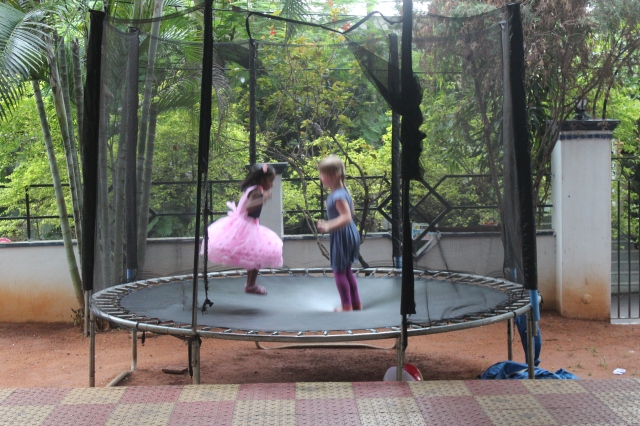
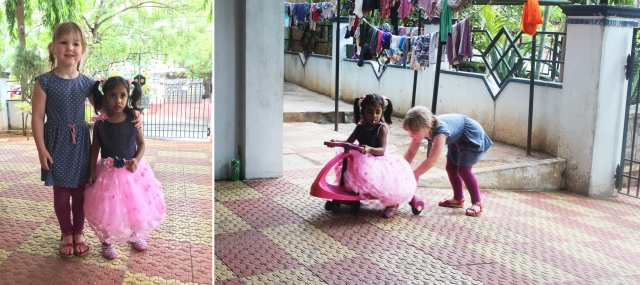
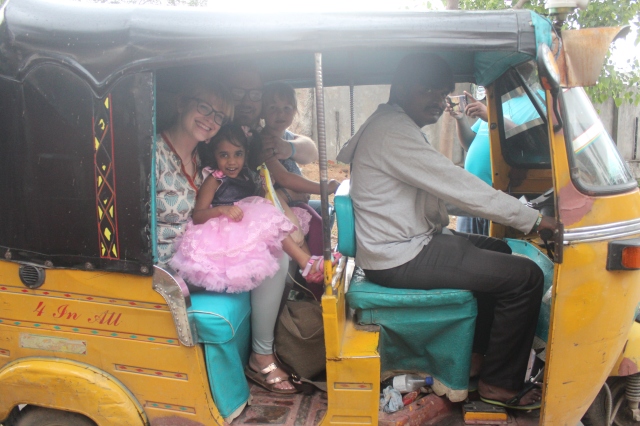

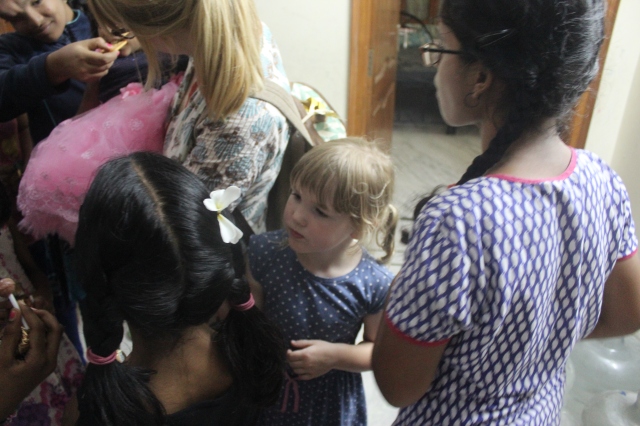



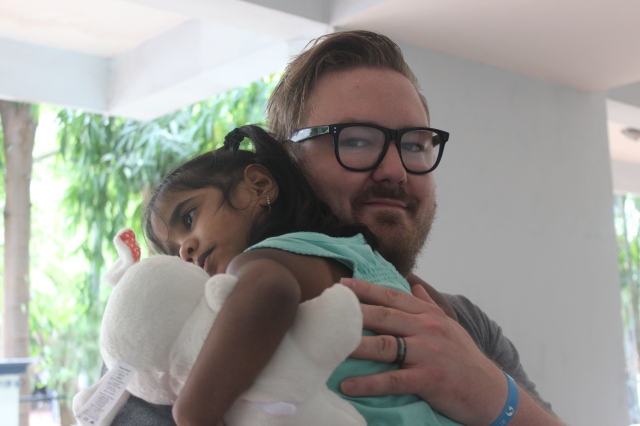






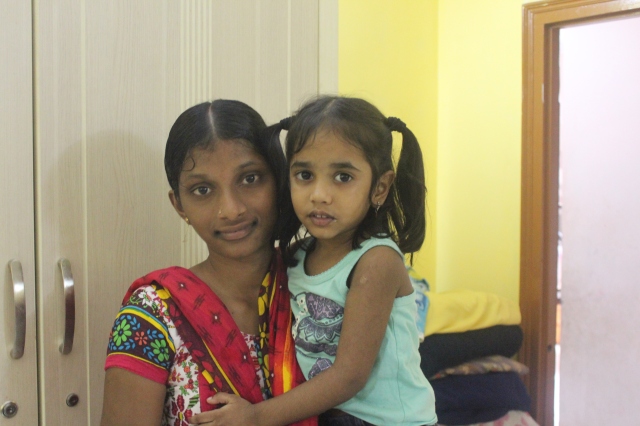
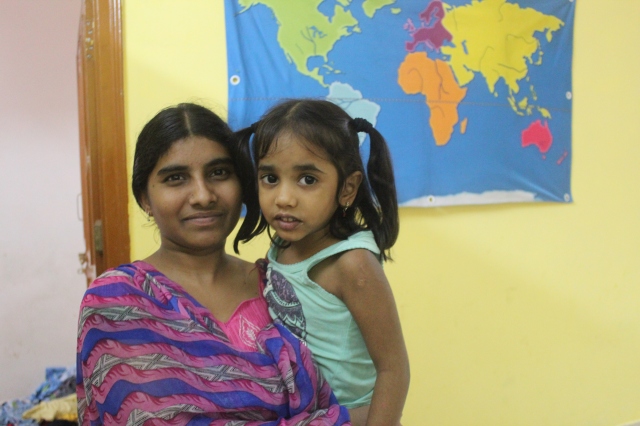
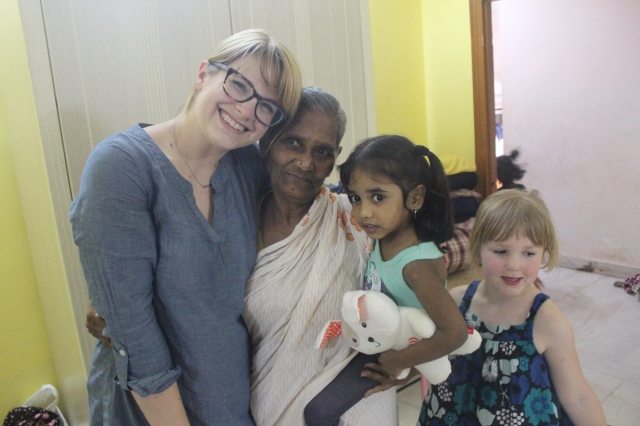
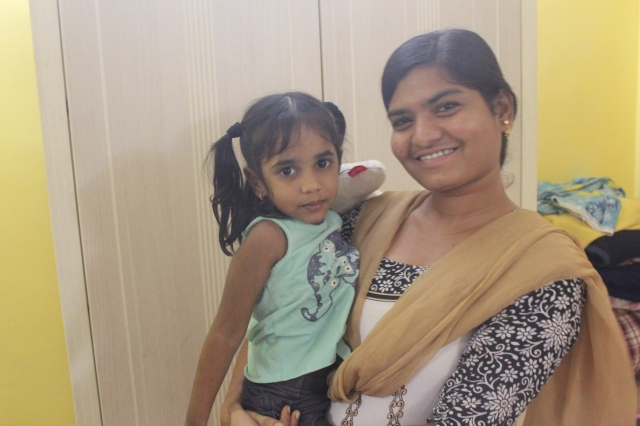

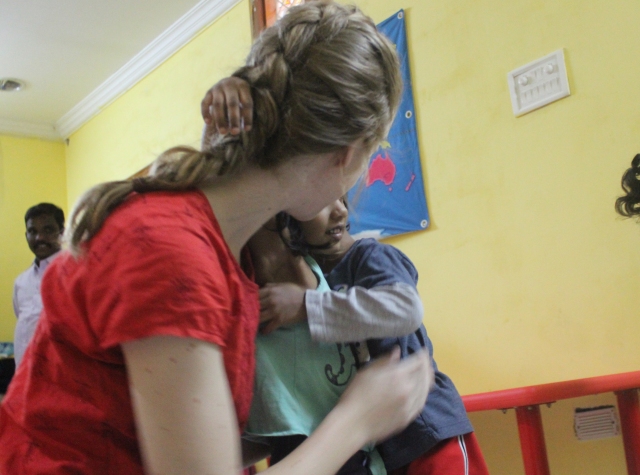











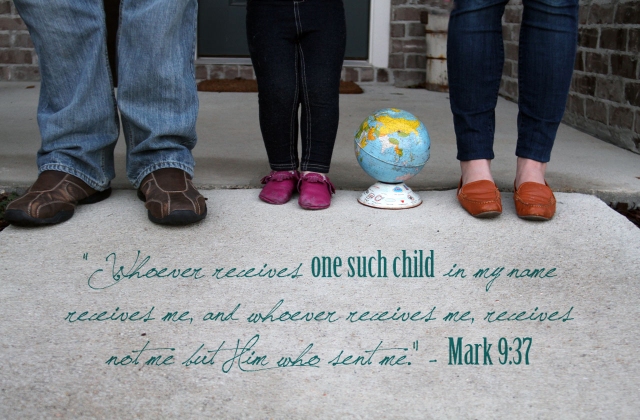











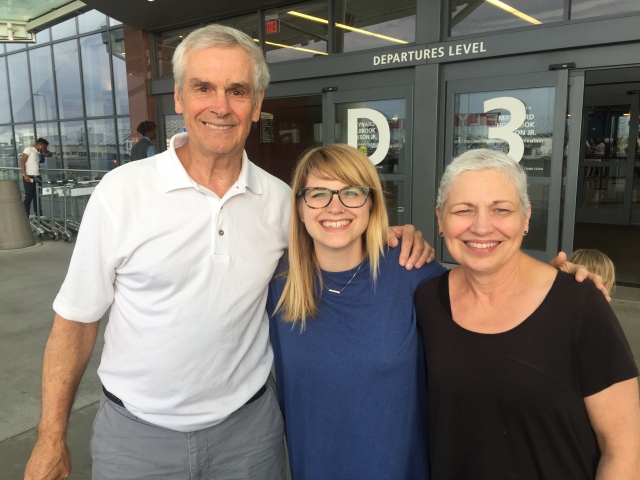





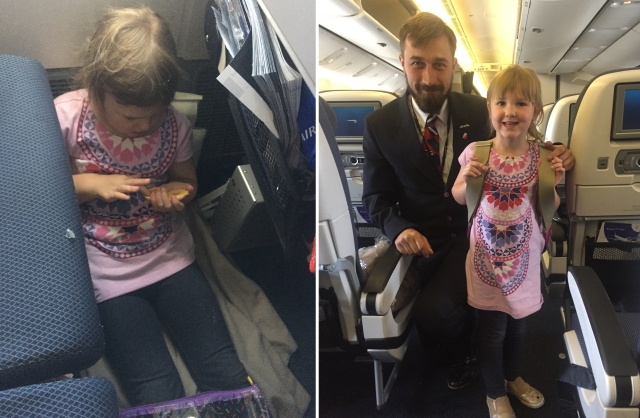
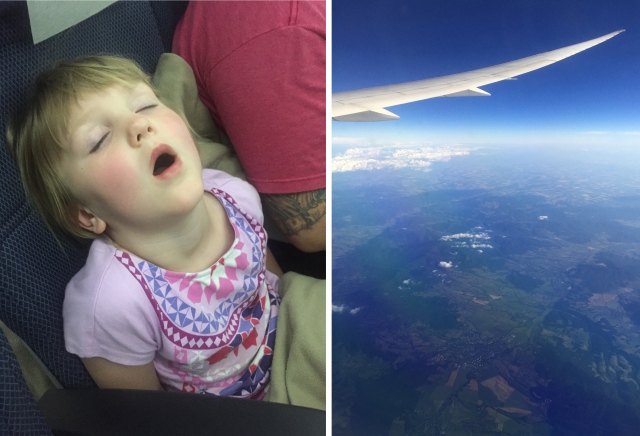


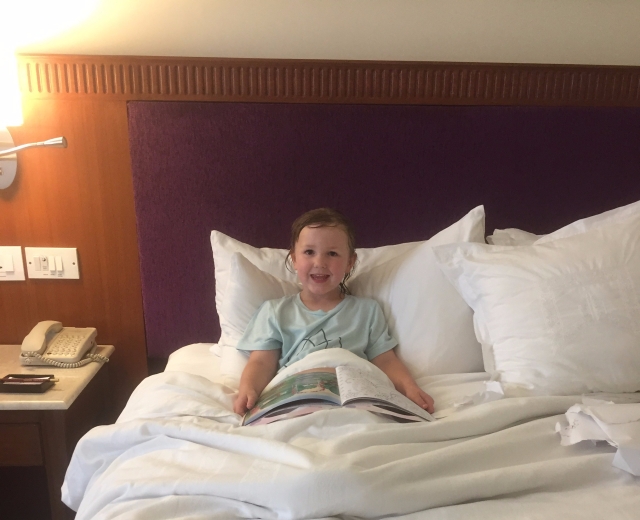









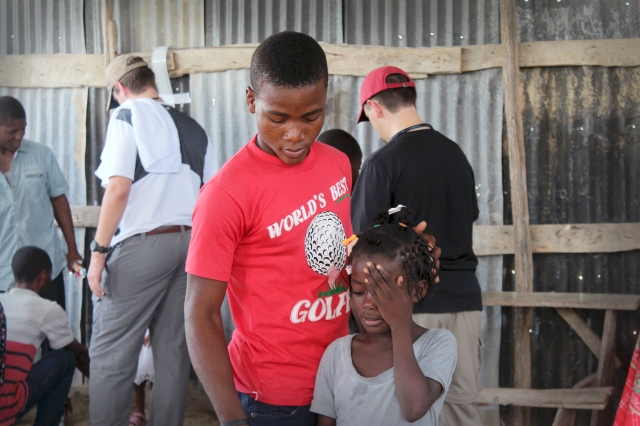


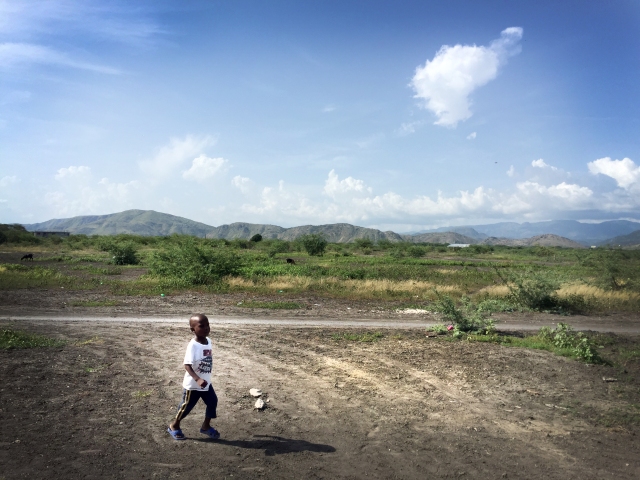


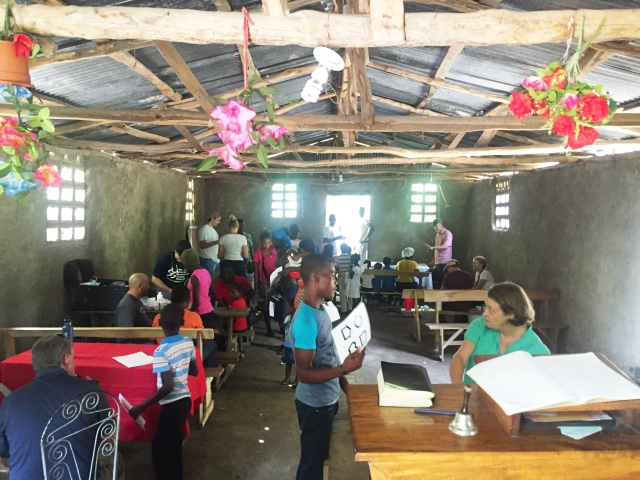
 One of our translators, Ken Ken, said that the kids wondered “what was wrong with us”, making reference to our light skin. After we wrapped the clinic, we all enjoyed spending time with the kiddos.
One of our translators, Ken Ken, said that the kids wondered “what was wrong with us”, making reference to our light skin. After we wrapped the clinic, we all enjoyed spending time with the kiddos.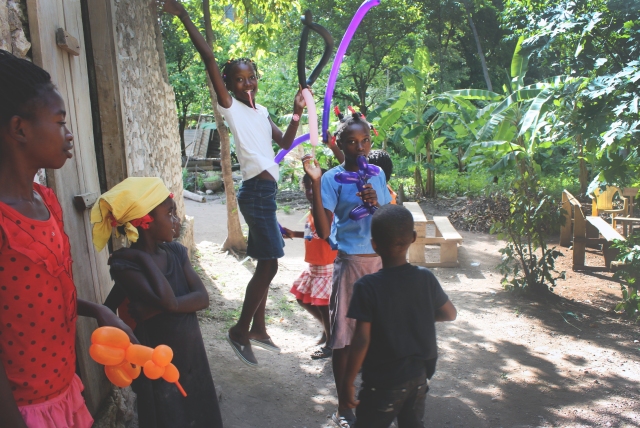




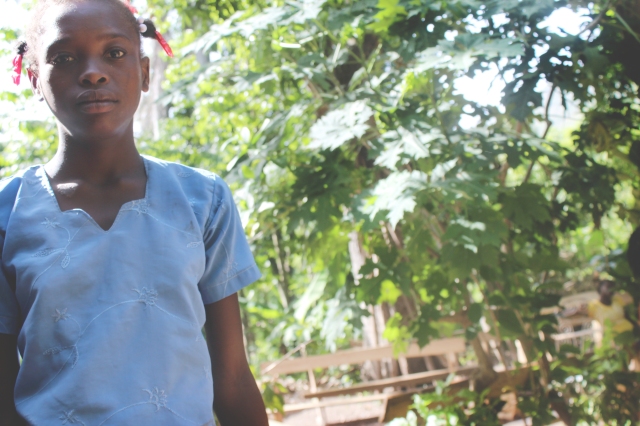


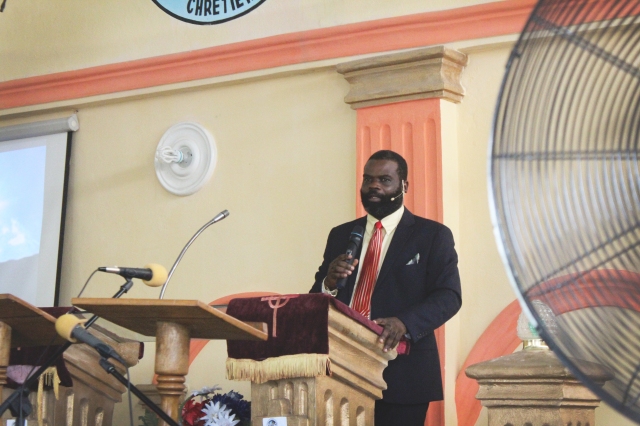




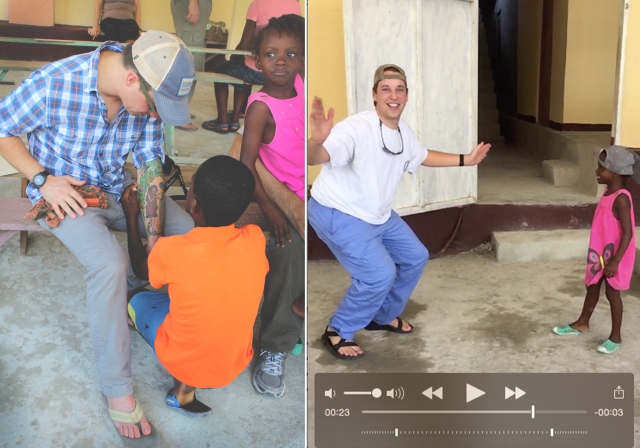



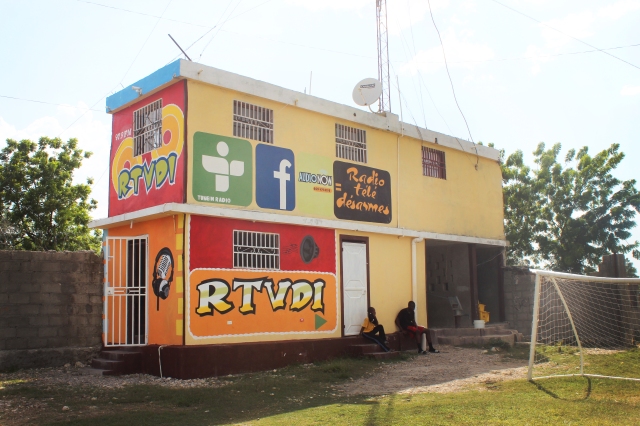


 This little one stole my heart and my lap.
This little one stole my heart and my lap.
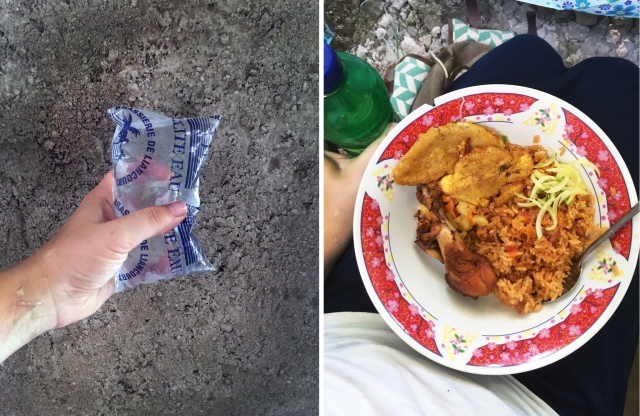
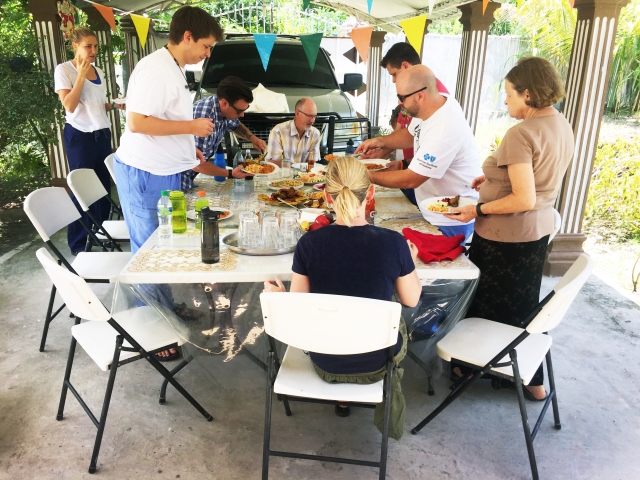

 I love the
I love the 




 It came with:
It came with:
